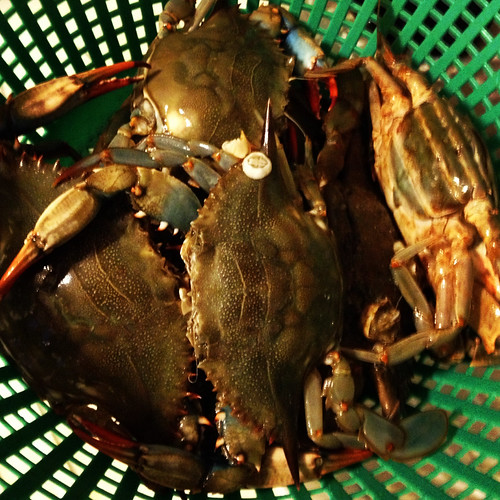I feel like I got in more touch with my grandmother's side of the family last week.
I have vague memories of crabbing at a 1989 family reunion in Virginia Beach. I would have been five, almost six, and my memory of floating in a rubber dinghy, crab line in hand, is either real or derived from photos. But I know this part of family -- my grandmother and her siblings, their offspring, and their offspring -- crab.
Photos show a grinning cousin holding up a bushel basket filled with blue crabs; my father and uncle, waist-high in the water with lines; my grandmother and great aunts and uncles sitting around a table covered in newspaper and boiled crabs.
Apart from that family reunion, I have crabbed maybe once on the Outerbanks, out of shallow, reedy ditch. We threw back everything we caught. It was based on this little experience, emailed instructions, and some YouTube videos that I lead my husband and friends on their first crabbing experience.
I tweeted my concern about our expedition, to which my brother replied, "How hard can it be? Twine + fence post + ocean = crab."
Turns out he was right, although that equation is missing "raw chicken" and "fishing weight." We caught 14 crabs and cooked and ate six of them that night.
Here are a few things I learned from my first grown-up crabbing venture:
1. 7 Elevens do not sell twine. Walgreens does.
2. You can use kite string (on a handle or a spool) for your line.
3. Apparently, leaving your chicken necks outside over night increases the nibbles.
4. You can simply stand in the water with your net and line. A low dock would probably decrease the chance of a crab running across your feet.
5. You'll know when there's a crab on your line -- there is a definite tug.
6. Putting blue crabs in fresh water for 30 minutes doesn't drown them.
7. A crab can crawl out of a plastic colander
